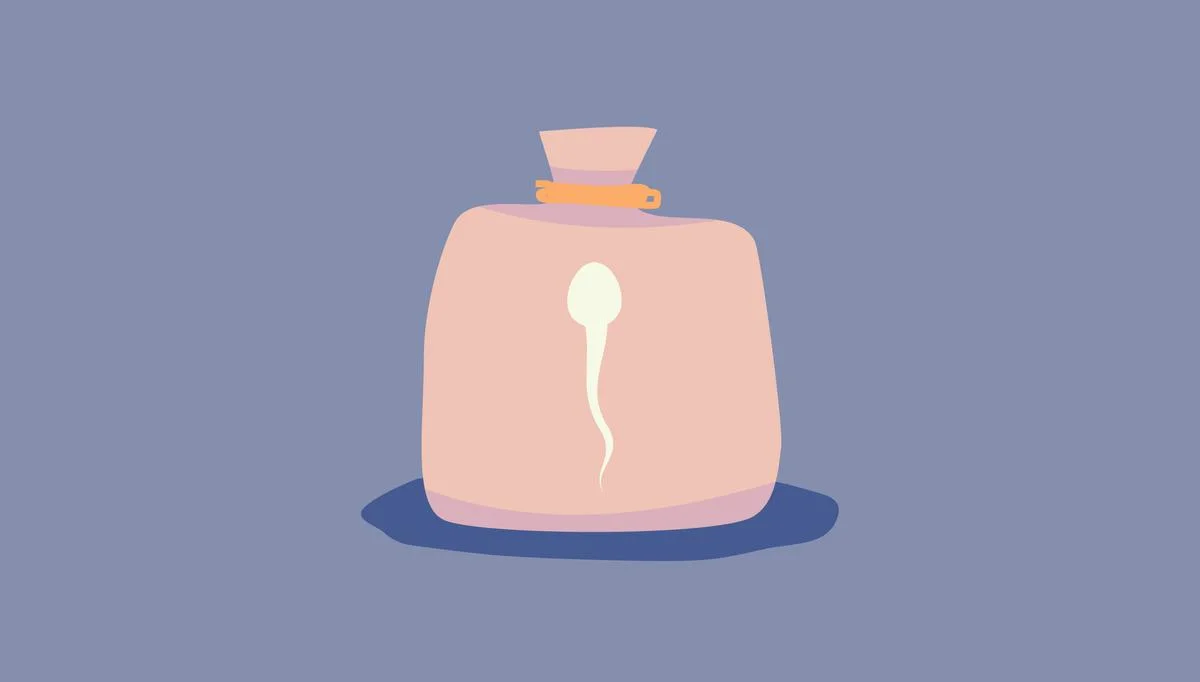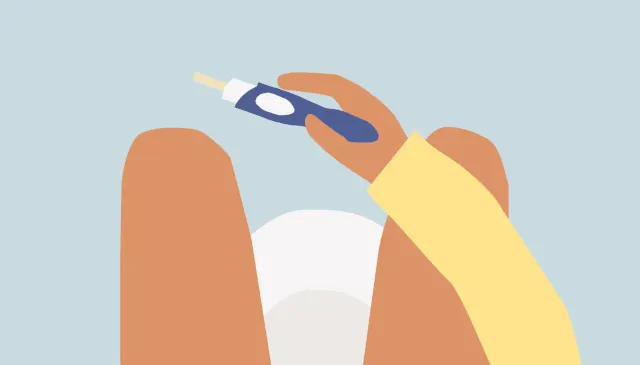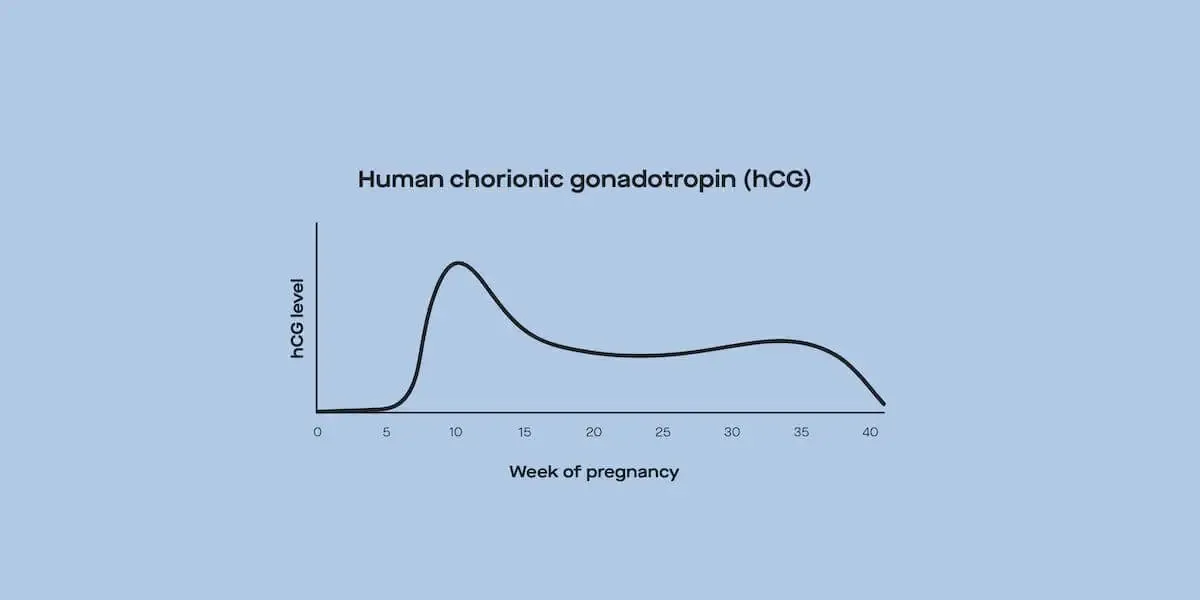Here's what we'll cover
Here's what we'll cover
There are many reasons infertility can happen. Even though infertility is quite common—affecting up to 15% of couples—there’s still a lot of stigma around these issues, and many misconceptions. For instance, many people still assume that infertility usually comes from issues with the woman’s reproductive system, when in fact, male factor infertility plays a role in up to 50% of cases (Leslie, 2021).
Male factor infertility means that there is a problem with the amount or quality of the sperm or its ability to travel to fertilize an egg (oocyte) (Leslie, 2021).
Fortunately, reproductive medicine specialists have developed a procedure that can help infertile couples get pregnant even if there are problems with the semen. It's called intracytoplasmic sperm injection or ICSI (pronounced “ick-see”) for short.
What is ICSI?
Intracytoplasmic sperm injection (ICSI) is a specific process introduced in 1992 to help couples with male factor infertility get pregnant through in vitro fertilization (IVF). ICSI has made fatherhood possible for many men with very low sperm counts or low sperm motility who might otherwise need to use donor sperm (Boulet, 2015; Rosen, 2021).
IVF is a method of assisting a woman in getting pregnant by taking an egg from her body, fertilizing it in a laboratory, and then returning the fertilized egg to her body. ICSI is a special technique used to fertilize the egg in the lab (Leslie, 2021; Rosen, 2021).
The use of ICSI during fertility treatments has increased substantially in the last 20 years, even in couples who don’t have a diagnosis of male factor infertility. This is controversial, though, as there is little evidence this procedure is effective for this population (Bosch, 2020).
ICSI vs. IVF
With standard IVF, an egg is placed in a dish along with semen. It is then monitored carefully to see if fertilization occurs. In contrast, ICSI involves taking a single sperm and injecting it directly into the cytoplasm of the egg using a glass pipette under a microscope. This greatly increases the number of eggs that successfully become fertilized, particularly when there are issues with the sperm (Leslie, 2021; Rosen, 2021).
ICSI won’t improve the fertilization rates compared to IVF alone when the cause of the infertility isn’t related to problems with the sperm. Research shows that using ICSI when the cause of the infertility is unknown or is related to problems with the egg doesn’t result in more live births (Bosch, 2020).
What to expect during an ICSI procedure
While the exact protocol can vary between providers, most IVF/ICSI procedures follow a similar pattern.
1. Controlled ovarian stimulation
The first step in performing IVF with ICSI is to obtain eggs for the procedure. This is done by using various medications to stimulate the ovaries to produce more eggs than they normally would during a menstrual cycle (Walker, 2021).
The medications most commonly used to stimulate ovulation include (Choe, 2021):
Clomiphene citrate
Letrozole
Gonadotropins
2. Egg retrieval
Once the egg follicles have grown to the right size, your provider will perform an egg retrieval procedure. You will be sedated during the procedure. Using a transvaginal ultrasound to guide them, the embryologist will use a needle to suck up the mature egg follicles. In most cases, approximately 10 to 20 eggs will be retrieved (though results vary from person to person and from cycle to cycle) (Choe, 2021).
3. Fertilization
The semen is prepared by using a centrifuge and special chemicals to create a concentrated amount of sperm. For ICSI insemination, one sperm is injected directly into each of the eggs retrieved. About 60% of the eggs will become fertilized and have the chance to develop into embryos (Choe, 2021; Leslie, 2021).
4. Embryo transfer
Three to five days after the embryos are fertilized, they are ready to be transferred into the uterus. They will be moved from the petri dish into a special catheter. Then your provider will use ultrasound to help guide the catheter through the cervix and into the uterus. The embryos are placed a few centimeters from the top of the uterus, where it is hoped that they will implant and begin to grow into a fetus (Choe, 2021).
Are there any risks to ICSI?
Most of the risks associated with intracytoplasmic sperm injection are the same as those associated with in vitro fertilization, but there are some additional risks you should be aware of.
Multiple gestations
Multiple gestations, such as twins or triplets, occur in about 30% to 40% of all pregnancies produced by IVF with ICSI. This is compared to only 3.4% with naturally conceived pregnancies. Pregnancy with multiple fetuses can have health consequences for both the parent and the babies (Leslie, 2021; Walker, 2021).
Currently, the American Society for Reproductive Medicine and the Centers for Disease Control strongly recommend only transferring one embryo at a time to help reduce the risks of having multiple babies at once (Walker, 2021).
Ovarian hyperstimulation syndrome (OHSS)
OHSS is a condition that can be caused by using medication to stimulate ovulation before the egg retrieval procedure. You are most at risk of developing OHSS if you produce more than 20 mature egg follicles and receive an HCG shot to trigger ovulation. Your healthcare provider will monitor you closely and can take steps to help you avoid this condition if they suspect you’re at risk (Walker, 2021)
Damage to the egg
ICSI is a complex and invasive micromanipulation technique that involves injecting a single sperm into an egg using a glass pipette. During this procedure, the egg can potentially be damaged and become unusable. This can happen even with a skilled and careful technician (Bosch, 2020).
Developmental issues
ICSI is still a relatively new procedure, so the long-term effects on the children born after using it are still being studied. Some research has shown that children born using ICSI might be at increased risk for developmental issues than children who weren’t conceived this way (Bosch, 2020).
More studies are needed to follow these children over time. However, it is unlikely that this is related to the ICSI procedure itself. It may have to do with the issues that caused infertility in the first place (Bosch, 2020).
ICSI has allowed many men who would otherwise be infertile to pass on their genes. It's possible that some of these causes of infertility can be passed on through the chromosomes in the genes. Healthcare providers can perform genetic testing and suggest measures that can help prevent chromosomal abnormalities from being passed to the embryo (Leslie, 2021).
What is the ICSI success rate?
Many factors can affect the success rates of IVF with ICSI, including your age, underlying health issues, and the specific IVF protocols used.
The pregnancy rates of ICSI are similar to those of IVF cycles alone. Approximately 60% of the eggs used will become fertilized. After the implantation procedure, about 20–30% of those embryos transferred into the uterus will develop into pregnancy for each treatment cycle. Across multiple cycles, this rate can increase by up to 45% (Leslie, 2021).
Medical researchers have found that using ICSI can increase the likelihood of achieving a fertilized egg that can be implanted in the uterus. It doesn’t increase the rates of successful implantation and pregnancy, though (Boulet, 2015).
How much does ICSI cost?
ICSI is an add-on service to an IVF cycle. Adding ICSI to an IVF cycle increases the cost of the IVF cycle by an average of 8.5–30% per cycle. The actual cost to you for each cycle will depend on your location, any insurance benefits you have for fertility procedures, and the specific protocols that your reproductive specialist uses (Bosch, 2020).
Some health insurance plans do provide coverage for IVF cycles with ICSI. However, they may have restrictions on the circumstances when they cover the service. You should contact your plan to find out what coverage you have. Your reproductive specialist’s office will have experience helping clients navigate insurance benefits and payments (Boulet, 2015).
DISCLAIMER
If you have any medical questions or concerns, please talk to your healthcare provider. The articles on Health Guide are underpinned by peer-reviewed research and information drawn from medical societies and governmental agencies. However, they are not a substitute for professional medical advice, diagnosis, or treatment.
Bosch, E., Espinós, J. J., Fabregues, F., Fontes, J., García-Velasco, J., Llácer, J., et al. (2020). Always ICSI? A SWOT analysis. Journal of Assisted Reproduction and Genetics, 37 (9), 2081–2092. doi: 10.1007/s10815-020-01836-0. Retrieved from https://www.ncbi.nlm.nih.gov/pmc/articles/PMC7492350/
Boulet, S. L., Mehta, A., Kissin, D. M., Warner, L., Kawwass, J. F., & Jamieson, D. J. (2015). Trends in use of and reproductive outcomes associated with intracytoplasmic sperm injection. JAMA, 313 (3), 255–263. doi: 10.1001/jama.2014.17985. Retrieved from https://www.ncbi.nlm.nih.gov/ pmc/articles/PMC4343214/
Choe, J., Archer, J. S., & Shanks, A. L. (2021). In vitro fertilization. [Updated Sep 9, 2021]. In: StatPearls [Internet]. Retrieved on Jan. 17, 2022 from https://www.ncbi.nlm.nih.gov/books/NBK562266/
Leslie, S. W., Siref, L. E., Soon-Sutton, T. L., et al. (2021). Male infertility. [Updated Aug 12, 2021]. In: StatPearls [Internet]. Retrieved on Jan. 17, 2022 from https://www.ncbi.nlm.nih.gov/books/NBK562258/
Rosen, M. (2021). Intracytoplasmic sperm injection. In: UpToDate . Retrieved on Jan. 17, 2022 from https://www.uptodate.com/contents/intracytoplasmic-sperm-injection
Walker, M. H. & Tobler, K. J. (2021). Female infertility. [Updated Dec 28, 2021]. In: StatPearls [Internet]. Retrieved on Jan. 17, 2022 from https://www.ncbi.nlm.nih.gov/books/NBK556033/










